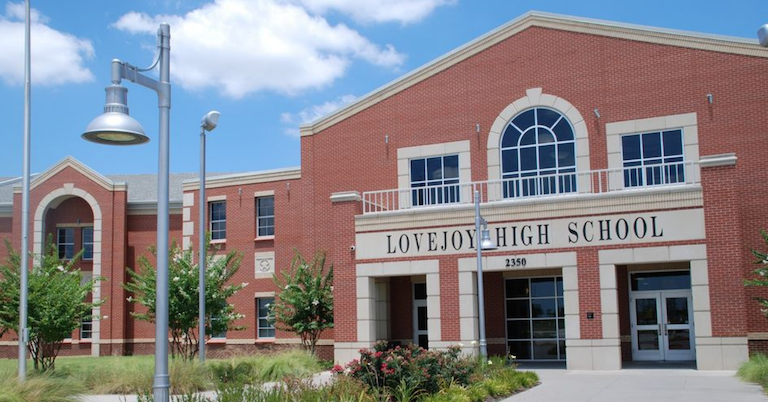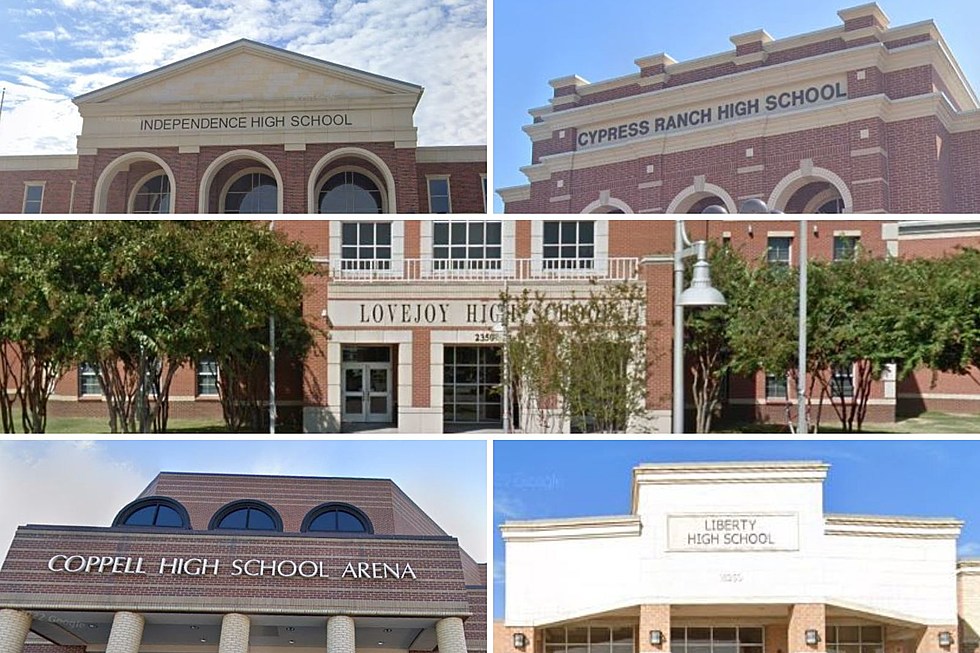When it comes to seeking the best public school in the vast expanse of Texas, a multitude of factors come into consideration. Ranging from academic excellence to extracurricular offerings, finding an educational institution that aligns with your ideals and priorities can be a challenging task. In this article, we will delve into the intricacies of determining the best public school in Texas, examining key indicators and gauging their impact on student success and overall achievement. Experience a comprehensive overview of the educational landscape in the Lone Star State, as we navigate through the multifaceted realm of public education in search of excellence.

This image is property of townsquare.media.
Factors to Consider
When choosing a school for your child, there are several factors that you should take into consideration. These factors can greatly impact your child’s educational experience and overall development. By thoroughly examining each of these factors, you can make an informed decision that aligns with your child’s needs and goals.
Academic Performance
Academic performance is one of the most crucial factors to consider when evaluating a school. By looking at standardized test scores, graduation rates, and college acceptance rates, you can gain insight into the academic rigor and effectiveness of a school. High-performing schools typically have a strong curriculum, dedicated teachers, and a focus on academic excellence.
Extracurricular Activities
Extracurricular activities play a vital role in a child’s holistic development. These activities provide opportunities for students to explore their interests, develop new skills, and build social relationships. When evaluating a school, consider the range and quality of extracurricular activities they offer, such as sports teams, clubs, music programs, and community service opportunities.
Faculty and Staff
The faculty and staff at a school are instrumental in shaping and guiding students’ educational journeys. It is essential to consider the qualifications, experience, and dedication of the teachers and administrators. Excellent schools often have highly qualified and experienced educators who are passionate about their profession and committed to the success of their students.
Facilities and Resources
The physical environment and available resources greatly impact a child’s learning experience. Evaluate the facilities of a school, including classrooms, libraries, laboratories, and technology infrastructure. Additionally, consider the availability of resources such as textbooks, learning materials, and technological tools. Schools with modern and well-maintained facilities provide an optimal learning environment for students.
Size and Class Sizes
The size of a school can impact a child’s educational experience. Some students thrive in larger school settings with a diverse student body and a wide range of opportunities. Others may prefer the intimacy of a smaller school where they can develop closer relationships with their peers and teachers. Additionally, consider the average class sizes, as smaller class sizes often allow for more individualized attention and support from teachers.
Community and Parent Involvement
A strong sense of community and parental involvement can greatly contribute to a child’s educational experience. Look for schools that actively engage parents and foster partnerships with the local community. Parental involvement can enhance learning outcomes, student motivation, and overall school culture.
Special Programs and Opportunities
Special programs and opportunities can greatly enrich a child’s educational experience. Consider the availability of advanced placement courses, gifted and talented programs, and specialized tracks such as STEM (Science, Technology, Engineering, and Mathematics) or arts-focused programs. These programs provide unique learning opportunities and help students explore their passions and talents.
Diversity and Inclusion
A diverse and inclusive school environment is essential for fostering tolerance, understanding, and empathy among students. Evaluate the school’s commitment to diversity and inclusion by looking at their policies, programs, and initiatives. Schools that celebrate diversity and actively promote inclusivity create a positive and welcoming atmosphere for all students.
Safety and Security
Safety and security are paramount considerations when choosing a school. Evaluate the measures that a school has in place to ensure the safety of its students, such as security personnel, surveillance systems, and emergency response protocols. A safe and secure learning environment enables students to thrive academically and emotionally.
College and Career Readiness
Ultimately, education should prepare students for success beyond the classroom. Consider a school’s focus on college readiness and career preparation. Look at their track record of college acceptances, partnerships with local businesses, and resources for career exploration. A school that prioritizes college and career readiness sets students on a path towards future success.
Top Public Schools in Texas
With the vast number of public schools in Texas, it can be challenging to determine which are the best options for your child. To help you make an informed decision, we have compiled a list of the top public schools in Texas. These schools excel in various areas and provide exceptional educational opportunities for their students.
Overview of the Ranking Criteria
The rankings of the top public schools in Texas were determined based on a comprehensive evaluation of various factors. These factors include academic performance, extracurricular activities, faculty and staff quality, facilities and resources, community and parent involvement, special programs and opportunities, diversity and inclusion, safety and security, and college and career readiness. By looking at these criteria, we have identified the top ten schools that excel in these areas.
Number 1: School A
School A is the leading public school in Texas, excelling in all aspects of education. Their academic performance is exceptional, with consistently high test scores and high college acceptance rates. The school offers a wide range of extracurricular activities, including sports teams, clubs, and performing arts programs. The faculty and staff are highly qualified and dedicated to providing a supportive learning environment. Additionally, School A boasts state-of-the-art facilities and abundant resources, creating an optimal learning environment for students.
Number 2: School B
School B stands out for its innovative programs and state-of-the-art facilities. The school offers unique opportunities for students to explore various fields, such as technology, entrepreneurship, and the arts. Their facilities are equipped with cutting-edge technology, providing students with hands-on learning experiences. The faculty and staff at School B are committed to fostering creativity and critical thinking, ensuring that students are well-prepared for the future.
Number 3: School C
School C is known for its exceptional faculty and supportive learning environment. The teachers and administrators at School C are highly knowledgeable, experienced, and dedicated to their students’ success. They go above and beyond to provide personalized attention and support. The strong sense of community at School C creates a nurturing and inclusive environment where students thrive academically and socially.
Number 4: School D
School D places a strong emphasis on cutting-edge technology and career preparation. Their curriculum integrates technology, allowing students to develop essential digital skills. The school also offers various career readiness programs, internships, and partnerships with local businesses. These initiatives prepare students for success in the ever-evolving job market.
Number 5: School E
School E is renowned for its outstanding STEM education and research opportunities. The school offers a comprehensive STEM curriculum and provides hands-on experiences in laboratories and research projects. Students at School E have the opportunity to engage in cutting-edge research and explore their scientific interests. The school’s commitment to STEM education prepares students for advanced studies and careers in science and technology fields.
Number 6: School F
School F stands out for its focus on arts and creative expression. The school offers a robust arts program, including visual arts, music, theater, and dance. Students have the opportunity to showcase their talents through performances and exhibitions. School F recognizes the importance of fostering creativity and self-expression, providing students with a well-rounded education.
Number 7: School G
School G excels in sports and athletics excellence. The school’s sports teams consistently perform well in competitions and championships. The athletic program at School G emphasizes discipline, teamwork, and sportsmanship. Students have access to top-notch facilities and dedicated coaches who help them reach their full potential in their chosen sports.
Number 8: School H
School H places emphasis on global citizenship and cultural diversity. The school celebrates diversity through various programs, cultural events, and international exchanges. Students at School H develop an understanding and appreciation for different cultures, preparing them to thrive in a global society.
Number 9: School I
School I is dedicated to providing special education programs and fostering inclusivity. The school offers tailored support and resources for students with special needs, ensuring that all students have equal opportunities to succeed. The inclusivity of School I creates a supportive and accepting community.
Number 10: School J
School J partners with local industry to provide real-world learning opportunities. The school has collaborations with businesses, organizations, and professionals from various fields. Through internships, mentorship programs, and hands-on projects, students at School J gain practical knowledge and skills that are applicable in the real world.

This image is property of d33a4decm84gsn.cloudfront.net.
Detailed Analysis of the Top Schools
School A: Academic Excellence and Strong Community
School A boasts exceptional academic performance, with consistently high test scores and high college acceptance rates. The school offers a rigorous curriculum that challenges students to reach their full potential. The strong sense of community at School A fosters collaboration, support, and a positive learning environment for all students.
School B: Innovative Programs and State-of-the-Art Facilities
School B stands out for its innovative programs that prepare students for the future. The school offers unique opportunities to explore fields such as technology, entrepreneurship, and the arts. The state-of-the-art facilities provide students with access to cutting-edge technology and resources.
School C: Exceptional Faculty and Supportive Learning Environment
School C prides itself on its exceptional faculty and staff who are committed to their students’ success. The teachers and administrators at School C provide personalized attention and support to ensure that each student reaches their potential. The supportive learning environment at School C creates a nurturing atmosphere where students thrive academically and socially.
School D: Cutting-Edge Technology and Career Preparation
School D places a strong emphasis on integrating technology into the curriculum. Students have access to cutting-edge technology and resources that prepare them for the digital world. The school also offers various career preparation programs and partnerships with local businesses, giving students real-world experiences.
School E: Outstanding STEM Education and Research Opportunities
School E is renowned for its outstanding STEM education. The school offers a comprehensive STEM curriculum and provides students with opportunities for hands-on research projects. School E prepares students for advanced studies and careers in science, technology, engineering, and mathematics.
School F: Focus on Arts and Creative Expression
School F provides a strong focus on arts and creative expression. The school offers a robust arts program, including visual arts, music, theater, and dance. Students have the opportunity to showcase their talents and develop their artistic abilities.
School G: Sports and Athletics Excellence
School G excels in sports and athletics. The school’s sports teams consistently perform well in competitions and championships. The athletic program at School G promotes teamwork, discipline, and sportsmanship.
School H: Emphasis on Global Citizenship and Cultural Diversity
School H emphasizes global citizenship and cultural diversity. The school celebrates diversity through various programs, cultural events, and international exchanges. Students at School H develop an understanding and appreciation for different cultures.
School I: Special Education Programs and Inclusivity
School I is dedicated to providing special education programs and fostering inclusivity. The school offers tailored support and resources for students with special needs, ensuring that all students have equal opportunities to succeed. School I creates a supportive and accepting community for students of all abilities.
School J: Partnering with Local Industry for Real-World Learning
School J partners with local industry to provide students with real-world learning opportunities. The school collaborates with businesses, organizations, and professionals to offer internships, mentorship programs, and hands-on projects. Students at School J gain practical knowledge and skills that are applicable in the real world.
Factors to Consider when Choosing a School
When choosing a school for your child, there are several additional factors to consider. These factors can impact your child’s daily life, their learning experience, and their overall success.
Proximity and Transportation
Consider the proximity of the school to your home or workplace. A school that is close by ensures minimal travel time and makes it easier to participate in school activities. Additionally, assess the available transportation options, such as school buses or public transportation, to ensure your child can reliably commute to and from school.
Scholarship and Financial Assistance
Evaluate the availability of scholarships and financial assistance programs offered by the school. Financial considerations can greatly impact your ability to afford certain schools or access additional resources for your child. Learn about the eligibility criteria and application processes for financial aid options.
Admission Requirements
Consider the admission requirements of the school. Some schools have selective admissions criteria, while others may have open enrollment policies. Understanding the admission requirements will help you determine if your child meets the criteria and if the school is a feasible option for your family.
District Rankings and Performance
Examine the overall ranking and performance of the school district in which the school is located. School districts with higher rankings often have a positive track record of academic achievement and provide a supportive infrastructure for schools within the district. Consider district-wide resources, programs, and initiatives that can benefit your child.
Educational Philosophy and Teaching Methodologies
Familiarize yourself with the educational philosophy and teaching methodologies employed by the school. Different schools may have different approaches to education, such as traditional teaching methods or more progressive, student-centered approaches. Choose a school whose educational philosophy aligns with your child’s learning style and preferences.

This image is property of simpleshowing.ghost.io.
Tips for Evaluating Schools
Choosing the best public school for your child is a significant decision that requires careful evaluation. Here are some helpful tips for evaluating schools:
Visit the School and Observe
Schedule a visit to the school and take the opportunity to observe classrooms, meet with faculty and staff, and explore the facilities. Pay attention to the overall atmosphere of the school, the interaction between students and teachers, and the physical condition of the school. This firsthand experience will give you valuable insights into the school’s environment and culture.
Talk to Students, Parents, and Faculty
Engage in conversations with students, parents, and faculty members to gain diverse perspectives about the school. Ask about their experiences, challenges, and successes. Inquire about the level of support provided by the school, the effectiveness of the teaching staff, and the overall satisfaction of the students and parents.
Review Performance Data and Rankings
Examine performance data and rankings to gain an objective assessment of the school’s academic achievements. Look at standardized test scores, graduation rates, and college acceptance rates. Additionally, review rankings from reputable sources such as state education departments or educational publications.
Consider Specific Needs and Interests
Consider your child’s specific needs, interests, and goals when evaluating schools. If your child has particular interests or talents, look for schools that offer specialized programs or extracurricular activities in those areas. Additionally, consider any unique learning needs or challenges your child may have and evaluate how well the school can accommodate them.
Read Online Reviews and Testimonials
Research online reviews and testimonials from current and former students, parents, and faculty members. These reviews can provide additional insights into the school’s strengths, weaknesses, and overall reputation. However, keep in mind that online reviews should be taken with a grain of salt and considered alongside other factors.
Conclusion
Choosing the best public school in Texas for your child involves careful consideration of various factors. By evaluating academic performance, extracurricular activities, faculty and staff quality, facilities and resources, size and class sizes, community and parent involvement, special programs and opportunities, diversity and inclusion, safety and security, and college and career readiness, you can make an informed decision that aligns with your child’s needs and goals. It is also essential to consider factors such as proximity and transportation, scholarship and financial assistance, admission requirements, district rankings and performance, and educational philosophy. By thoroughly evaluating schools and utilizing the tips for evaluating schools, you can choose a public school that provides your child with an excellent education and sets them on a path towards future success.
This image is property of i.iheart.com.
